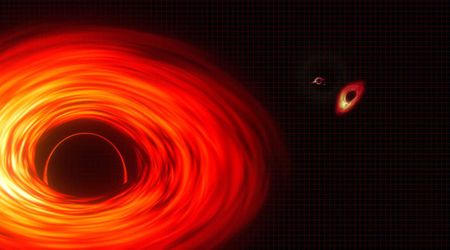Why SpaceX aborted its 60th Falcon 9 launch just minutes before midnight liftoff from Cape Canaveral

SpaceX halted the planned launch of its 60th Falcon 9 rocket of the year from Cape Canaveral Space Force Station, just minutes before its midnight mission. The company concluded its broadcast without immediately stating why the launch was aborted. Later, SpaceX announced on social media that an "auto abort" occurred just before liftoff, but assured that both the rocket and its cargo remained in good health, as reported on Spaceflight Now.

The mission, Starlink 12-15, has been designed to deploy 23 Starlink V2 Mini satellites into low Earth orbit, with 13 of them featuring innovative Direct to Cell capabilities. The initial launch attempt from Space Launch Complex 40 was set for 11:58 p.m. EDT on May 19 (0358 UTC on May 20). A contingent launch opportunity was then established for Tuesday, May 20, commencing at 11:18 p.m. EDT (0318 UTC). After the scrub, SpaceX explained in a social media post, "Falcon 9 had an auto abort just prior to T-0. Vehicle and payload are in good health, and teams are resetting for a launch attempt no earlier than Tuesday, May 20."
Falcon 9 had an auto abort just prior to T-0. Vehicle and payload are in good health, and teams are resetting for a launch attempt no earlier than Tuesday, May 20
— SpaceX (@SpaceX) May 20, 2025
Weather conditions for Monday's launch were highly favorable, with the 45th Weather Squadron forecasting a 95% chance of good weather and only a minimal risk from cumulus clouds. This mission features the inaugural flight of the Falcon 9 booster 1095. B1095 is the fourth new booster SpaceX has launched this year, supplementing their current active fleet of 18. Among these, booster B1072 has only flown once, as a side booster for the Falcon Heavy's GOES-U satellite launch in June 2024. Following liftoff on Tuesday, B1095 landed on the droneship 'Just read the Instructions' just over eight minutes into the flight. A successful landing was the 121st for that particular vessel and the 449th overall booster recovery for SpaceX.

SpaceX's recent launch, conducted on Friday, May 16, at 6:43 a.m. PT, successfully deployed 26 Starlink satellites into low-Earth orbit. This mission originated from Space Launch Complex 4 East (SLC-4E) at Vandenberg Space Force Base in California. Notably, the first stage booster supporting this flight was on its second mission, having previously launched two other Starlink satellite deployments, according to SpaceX.
Watch Falcon 9 launch 23 @Starlink satellites to orbit from Florida, including 13 with Direct to Cell capabilities https://t.co/iCyLoV8wPO
— SpaceX (@SpaceX) May 20, 2025
On January 24, 2021, a Falcon 9 mission set a record by deploying 143 satellites in a single launch, demonstrating its capability for high quantity deployment. With approximately 7,200 operational satellites already orbiting in LEO (low Earth orbit), SpaceX continues to expand its constellation. These satellites, roughly the size of a large table (if we don't count the broad solar arrays), are positioned in orbital shells to ensure overlapping internet coverage across the globe, providing fast internet access to users.
Designed and manufactured by SpaceX, Falcon 9 is a reusable, two-stage rocket engineered for the reliable and safe transport of both people and payloads to Earth orbit and beyond. As the world's first orbital-class reusable rocket, Falcon 9 enables SpaceX to refly its most costly components, significantly reducing the expense of accessing space.









